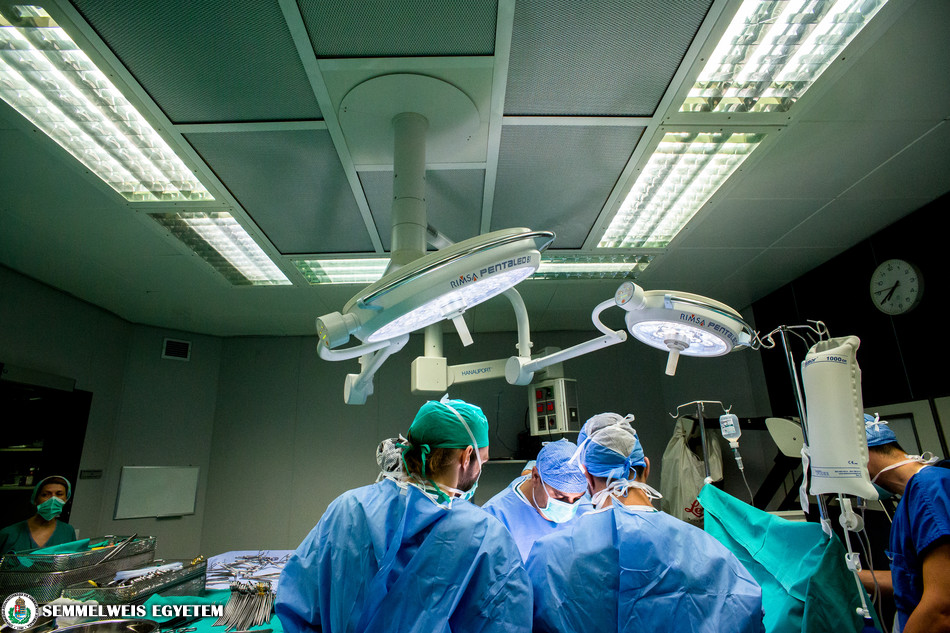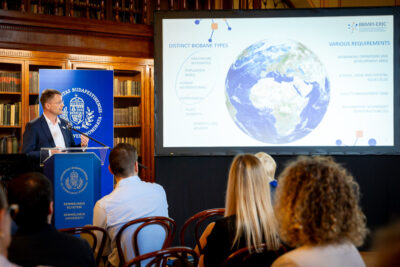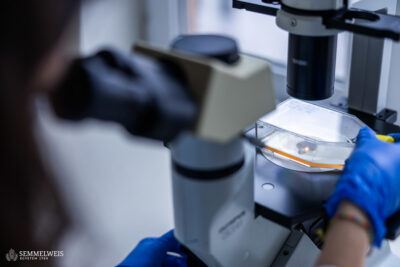30 years ago, when Dr. Zoltán Szabó performed the first heart transplant in Hungary, after waiting for a considerable amount of time for a suitable donor heart, he said that the long-term solution would be a genetically modified pig heart. Now, three decades later, the first such transplant has taken place
– Dr. Béla Merkely, rector of the university told our website, related to the recent news. According to the director of the Városmajor Heart and Vascular Center, in case the genetically modified pig heart is able to function in the long term, it could revolutionize the care of critically ill heart failure patients, since it could be a solution to the donor crisis that is occurring all over the world. In general, internationally, there are more people waiting for organs than donors available, and an epidemic such as the current one even exacerbates this situation.

The rector, who is specialized in cardiology also recalled that the current xenograft implantation has a medical history (detailed in our summary below), while biological valves made from porcine heart valves have been used in everyday practice for decades, including transcatheter aortic valve implantations (TAVI). One of the reasons for their use is the very low antigenicity of the pericardium, or the immune response it generates when it is introduced into the body.
The 57-year-old man, who underwent a pig heart transplant on 7 January 2022, was treated for more than six weeks prior to the transplant for life-threatening cardiac arrhythmias due to end-stage heart failure. He was on continuous mechanical circulatory support and was deemed unfit for a human heart transplant due to his serious health condition. The transplantation of the genetically modified pig heart was performed in Baltimore, and took approximately seven hours. Post-operative reports indicate that the patient is doing well and the scientific world awaits further results with a keen interest.
The production of genetically modified pig tissue is attributed to the company Revivicor. In total, ten genes have been modified. Four pig genes were inactivated, one of which would have caused a gradual increase in the size of the pig heart and three of which would have caused organ rejection after transplantation. Six human genes were inserted into the pig genome to mitigate adverse immunological reactions. Although the genes responsible for the rejection of the transplanted pig heart have undergone significant modification, the doctors’ announcement suggests that the recipient will require strong immunosuppressive therapy.
Xenograft transplantation (transplanting an organ from another species) has a long history dating back decades. In 1984, a baboon heart transplant was performed in California on a baby born with a severe cardiac malformation, but the patient died 21 days after surgery. Later on, it became clear that the main difficulty with xenotransplantation was the immunological reactions resulting from the differences between species. The production of genetically modified animal organs, including pig hearts, was then started. In many cases, the targets of genetic modifications are the molecules responsible for immune responses. Researches on these are of undisputed clinical importance, as the widespread availability of genetically modified organs could significantly reduce the time spent on a transplant waiting list.

In October 2021, a pair of pig kidneys were implanted in a brain-dead patient in New York, with the consent of the family. The kidneys functioned well for days after the operation.
The molecular basis of gene modifications in xenotransplantation is discussed in several recent publications. A significant number of these are aimed to prevent graft damage based on immunological reactions. Gene modification options include the introduction of human complement regulatory proteins (CD46, CD59, CD55), the elimination of xenoreactive antigens (e.g. by silencing α1,3-galactosyltransferase), the inhibition of cellular xenograft rejection (including expression of human CD47), and the introduction of human proteins that regulate blood coagulation and inflammation (Lu et al. 2019). A 2018 publication reported on the silencing of α1,3-galactosyltransferase in 14 genetically modified pig hearts transplanted into baboons, as well as the delivery of human CD46 molecules and thrombomodulin, with good clinical results (Längin et al. 2018). In a subsequent study, these gene modifications were also performed in 8 male baboon’s implanted pig hearts, again with favourable clinical outcome (up to 3-6 months of survival) (Reichart et al. 2020).
Bibliography:
https://www.bbc.com/news/world-us-canada-59944889
https://www.bbc.com/news/world-59951264
https://www.sciencedaily.com/releases/2022/01/220110183051.htm
Lu T, Yang B, Wang R, Qin C. Xenotransplantation: Current Status in Preclinical Research. Front Immunol 2019;10:3060.
Längin M, Mayr T, Reichart B et al. Consistent success in life-supporting porcine cardiac xenotransplantation. Nature 2018;564:430–433.
Reichart B, Längin M, Radan J et al. Pig-to-non-human primate heart transplantation: The final step toward clinical xenotransplantation? Journal of Heart and Lung Transplantation 2020;39:751–757.
Pálma Dobozi, Szilvia Kugler (Városmajor Heart and Vascular Center)
Translation: Viktória Kiss
Photo: Attila Kovács – Semmelweis University (illustration)


